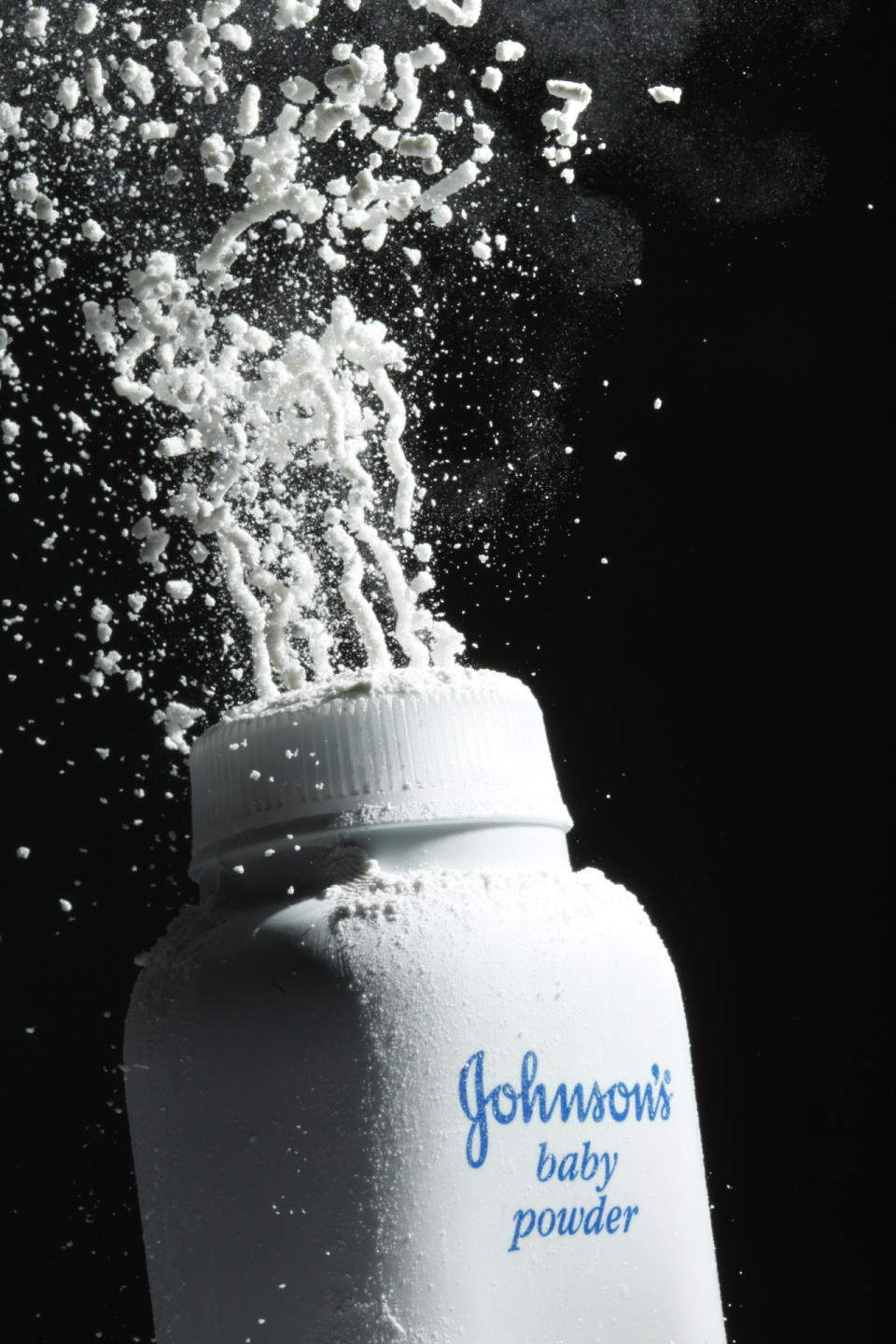The Dangerous History of Talcum Powder

It can be easy to ignore safety warnings when it comes to our most coveted beauty products, including those soothing talc-based powders. But this week’s headline-grabbing verdict — that Johnson & Johnson was to pay $72 million in damages to the family of a woman whose death from ovarian cancer was linked to her use of the company’s body powders — has been a rousing wake-up call.
Related: Your Beauty Products May Not Be Safe and Congress Is Finally Stepping In
“There’s been concerning evidence about talc — that it brings about a 30 percent increased risk of ovarian and endometrial cancers — for quite a while,” Sharima Rasanayagam, director of science at the Breast Cancer Fund and head of its Campaign for Safe Cosmetics, tells Yahoo Beauty, citing a number of studies. “It’s a small increase for a rare cancer — not like smoking and lung cancer — which may be one reason people haven’t taken notice of it. But we take a precautionary approach, especially because it’s not a product you need to be using. Why increase your risk for these cancers at all?”
Talc — a mineral substance that’s either mined or produced industrially — is used in various cosmetic and beauty products, from baby powders to eye shadows, in order to absorb moisture, or as a softening or anti-caking agent. It can sometimes be contaminated with asbestos. And it’s why an ever-increasing panoply of talc-free powders — from the Honest Company, Burt’s Bees, Crabtree & Evelyn, and even Johnson & Johnson itself — has been become available, typically with alternative ingredients such as cornstarch, silk powders, and finely milled oats.
Related: The Beauty Brand That’s Putting Safety First
In the Johnson & Johnson verdict, announced Monday in the St. Louis circuit court, it was noted by jurors that the company failed for decades to warn consumers about the risks of talc in order to boost its sales. Damages were awarded to the family of Jacqueline Fox, who had used Johnson & Johnson baby powder and Shower to Shower powder for 50 years.
In its defense, the company released a statement noting that the verdict “goes against decades of sound science proving the safety of talc as a cosmetic ingredient in multiple products. …” And on its website, Johnson & Johnson notes that “the talc used in all our global products is carefully selected and processed to be asbestos-free, and we confirm this with regular testing. The U.S. Food and Drug Administration (FDA) has also tested and confirmed he purity of our talc.”

Photo: AP
Still, according to the Environmental Working Group (EWG), “studies by the National Toxicology Panel demonstrated that cosmetic-grade talc free of asbestos is a form of magnesium silicate that also can be toxic and carcinogenic.” Also, notes EWG, a March 1976 Food and Drug Administration memo obtained by Fair Warning under the Freedom of Information Act “charged that cosmetics makers had been lax in monitoring the safety of talc supplies.”
Many point out that while studies about talc risks may indeed have been observational rather than able to prove absolute cause-and-effect, they have not ruled out danger out either.
“While the contradictory findings do make it hard to say that talc exposure clearly causes ovarian cancer, they also make it impossible to come to the conclusion that talc exposure does not cause ovarian cancer,” Alexandra Scranton, director of science and research at Women’s Voices for the Earth, tells Yahoo Beauty. “The logical conclusion is that it might cause ovarian cancer. And therein lies the ethical decision. If you have an ingredient in your product that might cause ovarian cancer in thousands of women, how do you proceed? Johnson & Johnson clearly chose to take the chance on ‘maybe it doesn’t’ and leave their women customers to bear the consequences of that decision.”
Use of talc in cosmetic products is banned in the EU, and in Canada it’s restricted for use in baby products “based on data indicating potential hazards to infants and children.”
In this country, the Centers for Disease Control and Prevention (CDC) lists no physical or chemical dangers for talc but notes that inhalation should be avoided. And since the 1960s, the American Academy of Pediatrics has warned against using talc-containing baby powder because of aspiration risks. The International Agency for Research on Cancer, meanwhile, says that usage of talcum powders around genital areas is “possibly carcinogenic to humans” — something that makes sense, since, according to Rasanayagam, studies have found evidence of talc “in ovaries and pelvic lymph nodes.”
Still, oversight is limited: Unlike food items, it’s not required that cosmetics and body products undergo an FDA review, only that they be “properly labeled” and “safe under labeled or customary conditions of use.” But that’s not enough, according to the Campaign for Safe Cosmetics. “We need to overhaul our cosmetics regulations, and campaigning around that is our whole raison d’être,” says Rasanayagam.
In the absence of an overhaul, consumers, in large part, will be left on their own to assess the potential dangers of products — which is a risky and burdensome proposition, Scranton notes. “Our opinion is that [Johnson & Johnson], and the cosmetics industry in general, chose unwisely decades ago to blindly defend the use of talc in the face of uncertain science, rather than take a precautionary approach for the sake of women’s health,” she says. “They have actively worked ever since to manufacture doubt about the links between talc and ovarian cancer, instead of investing in research to actually determine the risks, or to invest in inherently safer alternatives. … The unfortunate result is thousands of women suffering from ovarian cancers that may have been preventable.”
Top photo: H. Armstrong Roberts/ClassicStock/Getty Images



